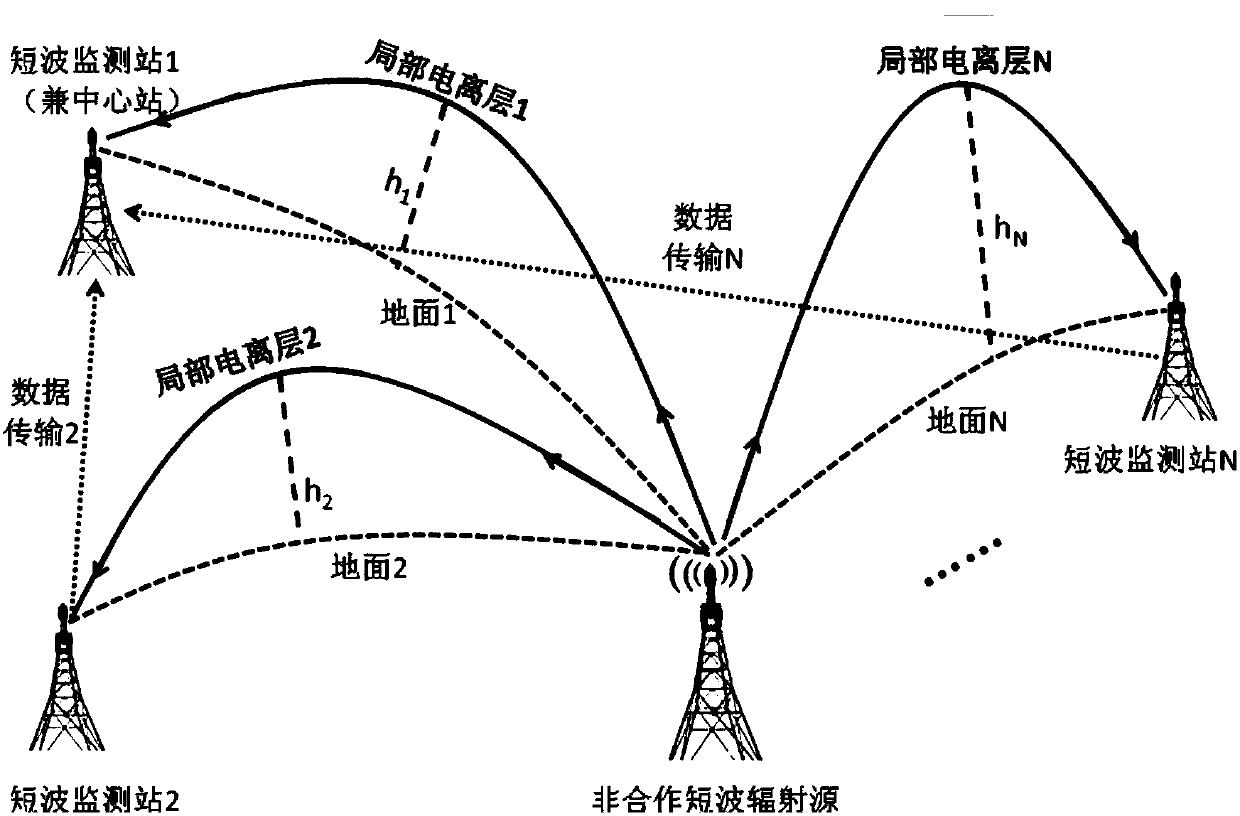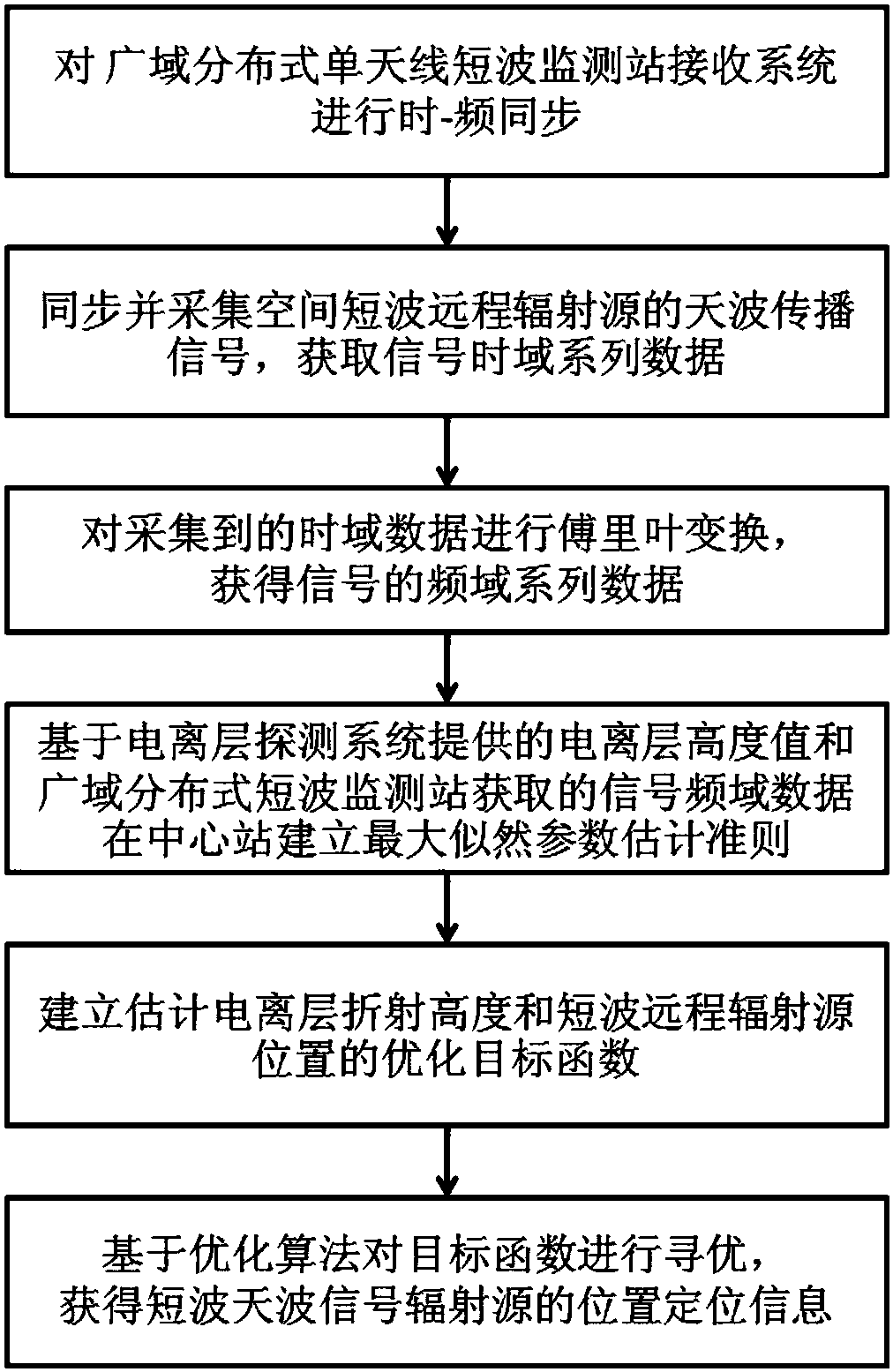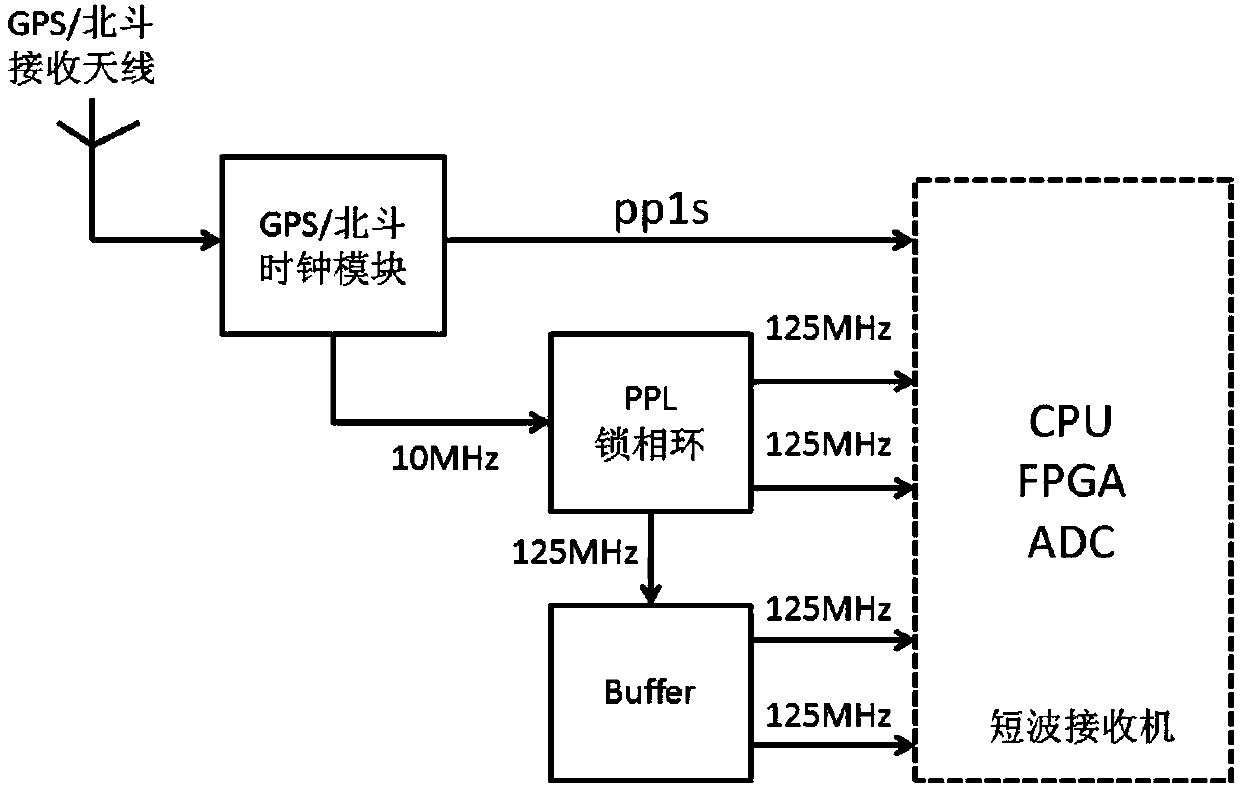Short-wave remote radiation source one-step locating method based on wide-area distributed single-antenna receiving
A distributed, single-antenna technology, used in positioning, radio wave measurement systems, instruments, etc., to achieve the effect of improving estimation accuracy and reliable algorithm performance
- Summary
- Abstract
- Description
- Claims
- Application Information
AI Technical Summary
Problems solved by technology
Method used
Image
Examples
Embodiment
[0041] see Figure 1~2 As shown, a one-step positioning method for short-wave remote radiation sources based on wide-area distributed single-antenna reception, specifically includes the following steps:
[0042] Step 1: Perform time-frequency synchronization on the receiving systems of N wide-area distributed single-antenna short-wave monitoring stations, and collect sky-wave propagation signals from external short-wave remote radiation sources to obtain signal time-domain series data;
[0043] Step 2: Perform Fourier transform operation on the collected M time-domain data sample points for each single-antenna short-wave monitoring station to obtain signal frequency-domain data;
[0044] Step 3: Transmit the signal frequency domain data obtained by each single-antenna shortwave monitoring station to the main server of the central station through the network, and based on the ionospheric height value obtained by the ionospheric detection system and the signal frequency domain d...
specific Embodiment
[0048] Specific examples: see Figure 1~2 As shown, a one-step positioning method for short-wave remote radiation sources based on wide-area distributed single-antenna reception, specifically includes the following steps:
[0049] Step 1, the time-domain model of the signal received by the nth (n=1,2,...,N) single antenna in the wide-area distributed short-wave monitoring station is
[0050] x n (t) = α n s[t-τ n (p,h n )-t 0 ]+ε n (t) (n=1,2,...,N)
[0051] Among them, p represents the position vector of the short-wave remote radiation source, h n Indicates the ionospheric reflection height experienced by the short-wave long-range radiation source propagating to the nth short-wave monitoring station through sky waves, t 0 Indicates the emission time of the short-wave remote radiation source, s(t) represents the complex envelope of the radiation signal of the short-wave remote radiation source, α n Indicates the loss factor of the target signal propagating to the nth ...
PUM
 Login to View More
Login to View More Abstract
Description
Claims
Application Information
 Login to View More
Login to View More - R&D
- Intellectual Property
- Life Sciences
- Materials
- Tech Scout
- Unparalleled Data Quality
- Higher Quality Content
- 60% Fewer Hallucinations
Browse by: Latest US Patents, China's latest patents, Technical Efficacy Thesaurus, Application Domain, Technology Topic, Popular Technical Reports.
© 2025 PatSnap. All rights reserved.Legal|Privacy policy|Modern Slavery Act Transparency Statement|Sitemap|About US| Contact US: help@patsnap.com



